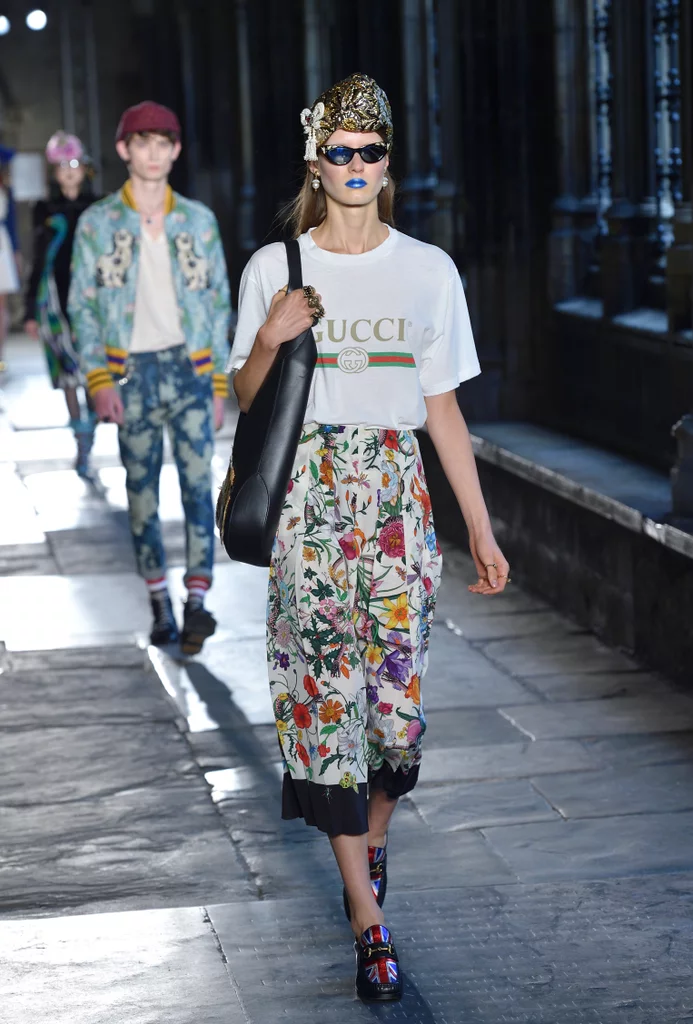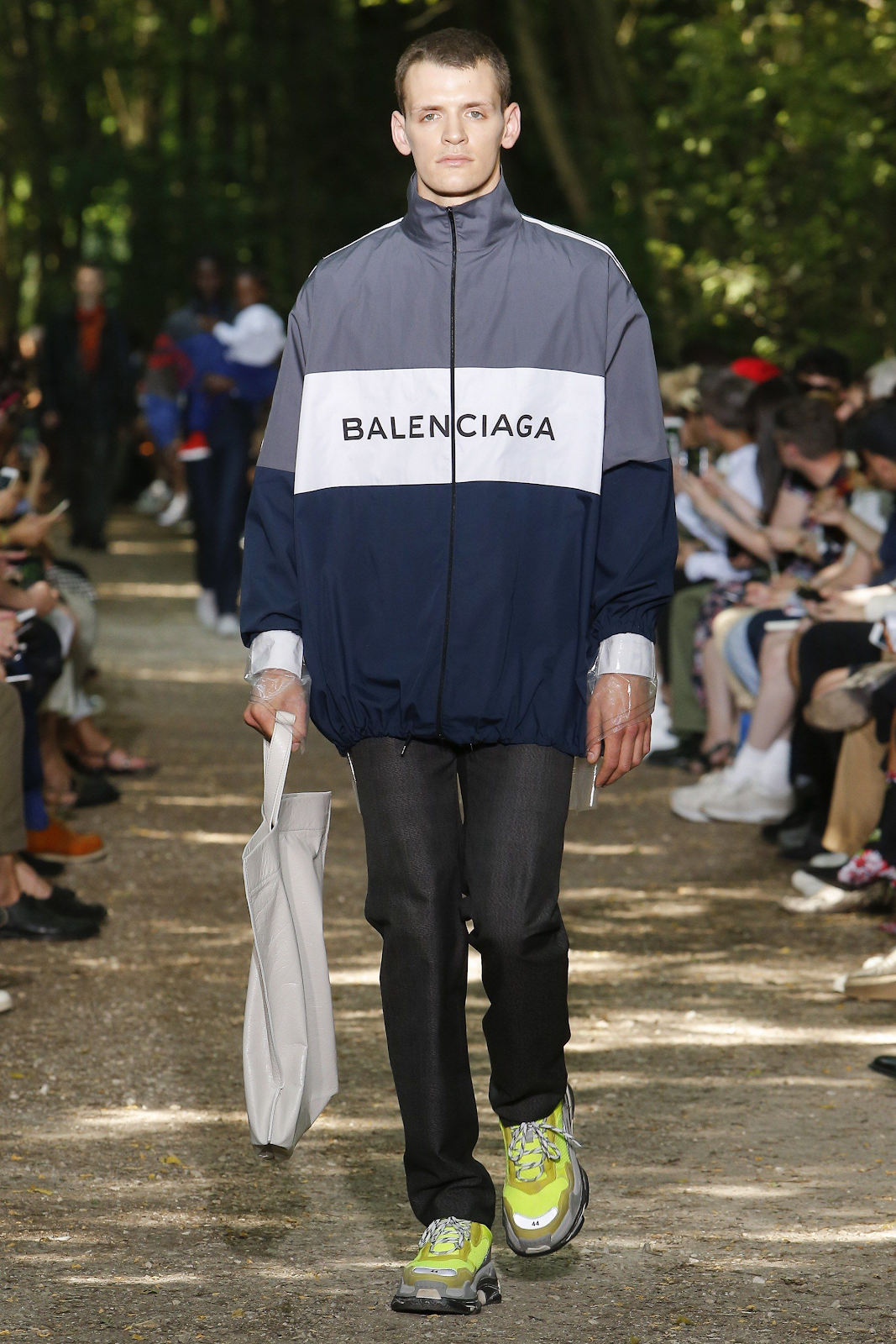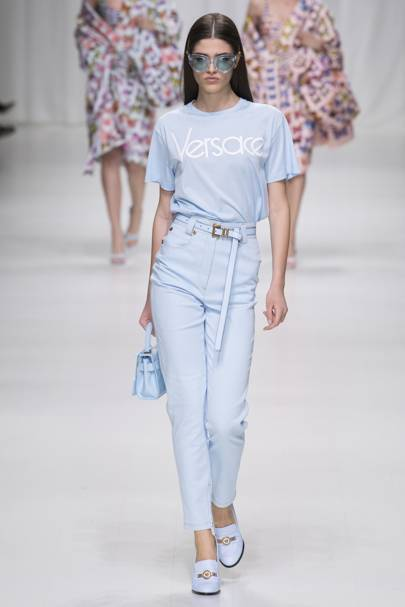Millennials Take High Fashion

Within the last decade, high fashion has transformed from clothing and accessories exclusive to the upper class to luxury products progressively entering the general consumer’s wishlist. Current trends now more than ever surround haute couture brands and emblems. The past year has seen the surge of the Balenciaga Sock Shoe, the Gucci Logo Tee, and the Off White belt. Rather than high fashion being geared towards middle-aged women shopping for classic statement bags, like the Dior Saddle Bag and the Chanel Boy Bag, younger shoppers are becoming a larger proportion of their market. This coincides with simpler and more athletic designs gradually being produced by a growing number of fashion houses. Now, streetwear is dominating runways.
Streetwear is often associated with hip hop and urban culture, which has gained traction in the mainstream media and influenced the world of fashion. Most recently, Kanye West and Virgil Abloh have become fashion powerhouses. West’s Yeezy collections have become one of the most sought-after collections of 2018. Similarly, Abloh’s luxury streetwear brand Off White has gained rapid growth in the luxury fashion market. Abloh was also recently named Louis Vuitton’s chief men’s designer. Similarly, within the last couple years, Fendi has boomed within the millennial population. With the debut of their athleisure collections, these brands are producing younger and more practical designs that appeal to the millenial youth.
Celebrities alike have publicized Fendi on social media, increasing its brand recognition. Nicki Minaj’s album artwork for her new single Chun Li, is simply her in a Fendi Logo Print Bikini, which basically serves as a mass print ad for the brand . A signature example of this is Gucci’s resurgence within the last decade. In the 1990’s, Gucci was a failing fashion house that was risking bankruptcy. Now, within twenty years, every millennial, housewife, and celebrity proudly wants or owns a Gucci piece. Since the 1990’s, while Gucci has kept many of it’s classic handbags, it has also introduced younger, more accessible items that have caught the eyes of the common millennial, like the Ace Sneaker, the Gucci slide, and the velvet Gucci Marmot bag. They all feature some form of the classic logo and demonstrate how millenials are falling deeper and deeper into the ethos of logo mania. Wearing the emblem of these high class brands makes millennials associate themselves with the grandeur of high fashion. By manipulating logo mania, companies are drawing in younger customers and keeping them, brilliantly growing their consumer body and building everlasting brand loyalty.
This change in dynamic in the fashion business has influenced brands to embrace streetwear. Supreme has risen to exclusivity as a streetwear brand by launching their collections in limited supply with designs all based on modifications of its simplistic red logo. Logo print pieces are potentially very popular with younger audiences because they are normally among the cheapest items in a fashion house’s collection and logos make expensive fashion recognizable. That is why the Louis Vuitton Neverfull continues to be a signature part of the Louis Vuitton handbag collection, it’s completely adorned with the LV print but is one of their least expensive bags Louis Vuitton continues to appeal to the younger crowd with the release of its limited-edition Louis Vuitton x Supreme collection featuring classic pieces and seemingly superfluous accessories, like skateboards and blankets, with the Supreme and Louis Vuitton logos. With the recent rebranding of Burberry, under new artistic director Riccardo Tisci, the brand is releasing its new collections in limited supply, like Supreme. Burberry announces a release date within a couple weeks of the release and reveals their pieces, exclusively on their social media platforms. The pieces that are exclusively sold online are casual streetwear pieces all with the new Burberry logo. By changing their marketing, the brand is increasing its exclusivity and attempting to appeal to a younger customer and gain part of the streetwear market.
By producing less intrinsic designs, higher fashion brands are in a win-win situation, gaining a larger profit margin and a larger customer base. The trend towards logos and streetwear that pushed Gucci and Fendi back into mainstream popularity, may influence other fashion houses to move towards streetwear and buy into the mass marketing power of logo mania. Yet, as more brands move towards casual athleisure and appeal to the younger yet larger demographic, it seems inevitable that these fashion houses will lose the elegance and sophistication of design that couture was once known for. While designers may still make eloquent gowns and innovative suits, monogrammed casual wear by the same house unavoidably muddles the brilliance of high fashion. Hopefully, design houses stay true to their craft and maintain the genius of their past designs to continue to inspire future generations of artists past trademarked emblems and capital letters.





